Fukui Prefectural Dinosaur Museum
Mystery of dinosaurs revealed by a Scanning Electron Microscope (SEM)
Fukui Prefectural Dinosaur Museum is a popular spot in Fukui. Behind the museum's exhibits is what could be called a "dinosaur laboratory". Researchers continue to bring the discoveries of new dinosaur species and world-level findings about fossil organisms. The SEM is an indispensable piece of equipment there.
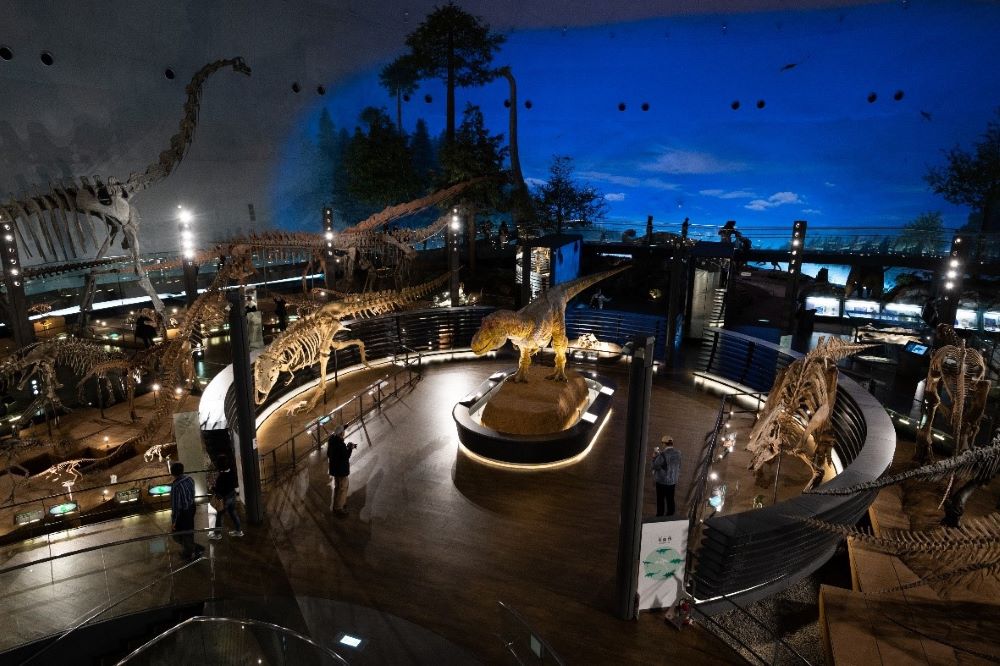
Behind the spectacular exhibits, there are 17 researchers!
Fukui Prefectural Dinosaur Museum re-opened after a large-scale expansion/renovation on July 14, 2023. The number of complete skeletons in the permanent exhibition increased from 44 to 50. In the new building added upon the expansion, three large screens which measure 9 m high x 16 m in total are placed on the three walls, and a computer-generated animation of life-sized dinosaurs in motion is shown on these walls around the visitors (not available when special exhibitions are held). "Fossil Research Training" on the 3rd floor of the new building is also the highlight of the renewal this time. Visitors can experience how to extract fossils from rocks containing them by using professional tools.
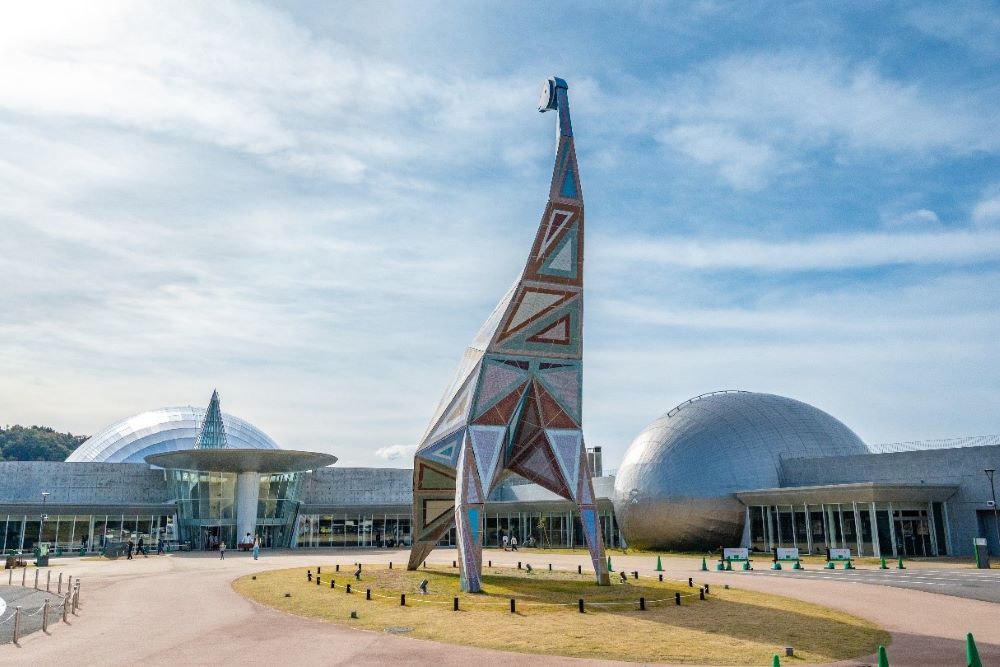
The number of visitors during the first month after the reopening exceeded 200,000, a 16.5% increase over the same period in 2019 (before the Covid-19 pandemic). Considering the extension of the Hokuriku Sinkansen line between Kanazawa and Tsuruga (March 16, 2024), further increase is expected.
The museum has long become a major visiting spot in Fukui. Meanwhile, seeing the museum organization behind, it has a unique staff structure even from a global perspective. The number of researchers is quite large, at 17. When looking at other museums, for example, The Royal Tyrrell Museum in Canada, has five researchers, which is one of the world's three major dinosaur museums. The National Museum of Nature and Science, in Japan has more than 50 researchers, but the researchers in the Department of Geology and Paleontology is 12. (Management are not included, such as manager, center chief, etc. as of December 2023). "It is only Fukui Prefectural Dinosaur Museum which holds researchers specialized in paleontology and geology as many as such". (Dr. Imai). One may call it a "dinosaur laboratory" even.
Researchers bringing outcomes one after another
The reason why the museum holds so many researchers is because the attractiveness of the museum is supported by the discoveries of new dinosaur species and world-level findings about fossil organisms brought by these researchers.
For example, the researchers of Fukui Prefectural Dinosaur Museum are engaged in describing most of the new dinosaurs which were discovered in Fukui. On September 8, 2023, it was reported by the museum that a series of dinosaur fossils found in Kitadani, Katsuyama, northwestern Fukui represents a new species. In the scientific article reporting this new species of dinosaur, names of four active researchers of the museum are found. The new dinosaur species belong to Ornithomimosauria, or so called the "ostrich dinosaurs". Because a part of its skeleton looks like the ones of tyrannosaurus, it was named "Tyrannomimus fukuiensis" which means "tyrannosaur mimic in Fukui". This is the 6th dinosaur species with a scientific name discovered in Fukui.
There was another world-level finding.
In 2014, when he was a research student of the Dinosaurs Laboratory, Fukui Prefectural University, Dr. Takuya Imai, a researcher, confirmed that the fossilized eggshell discovered in the dinosaur fossil quarry in Katsuyama belongs to a bird that lived about 120 million years ago(Early Cretaceous). At that time, the oldest known fossil eggshell of birds was about 80 million years old(Late Cretaceous). So, the discovery extended the oldest record of such fossils by more than 40 million years.
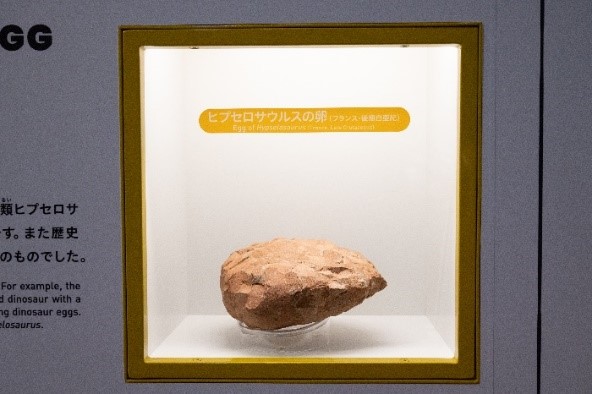
Fossil Hypselosaurus Egg (Late Cretaceous)
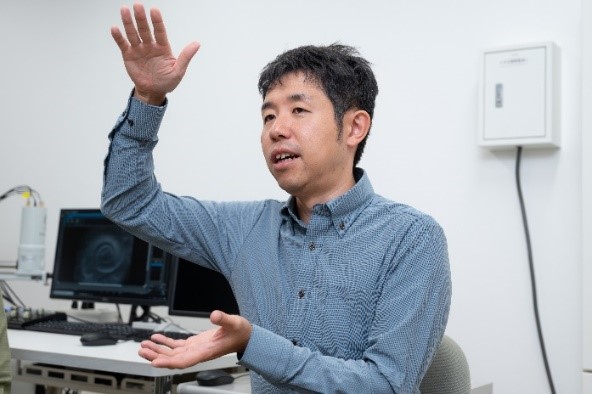
Dr. Takuya Imai
In addition, by exploring the rock horizons formed in the rivers and lakes in the Kitadani Formation of the Tetori Group, many fossils of bivalves are found. It was Dr. Kaito Asato, a researcher who had found that some color patterns were preserved in the fossils of bivalves that were discovered in the horizons 120 million years old. Even if they were preserved in good condition with the color patterns, it was difficult to prepare the bivalve fossils without destroying the patterns with the common preparation method then. "Gentle polishing by a sand bluster (a polishing tool by blasting sands) little by little made it possible to prepare the bivalve fossils with the color patterns" (Dr. Asato).
These fossil bivalves are beautifully preserved, and they look very similar to the modern bivalves. So, "looking at the patterns, we can hardly notice their difference against those of the modern bivalves" said Dr. Kentaro Nakayama, a researcher and co-author. Living freshwater bivalves are preyed on by crustaceans, fishes, birds, reptiles, and mammals. The colors and patterns on the shell are considered to help them camouflage to their living environment. In other words, there is a possibility that the fossil freshwater bivalves in the Kitadani Formation were preyed on by something. The candidates of the predators are considered to include crustaceans, fishes, birds, reptiles as well as some dinosaurs, based on the previous research.
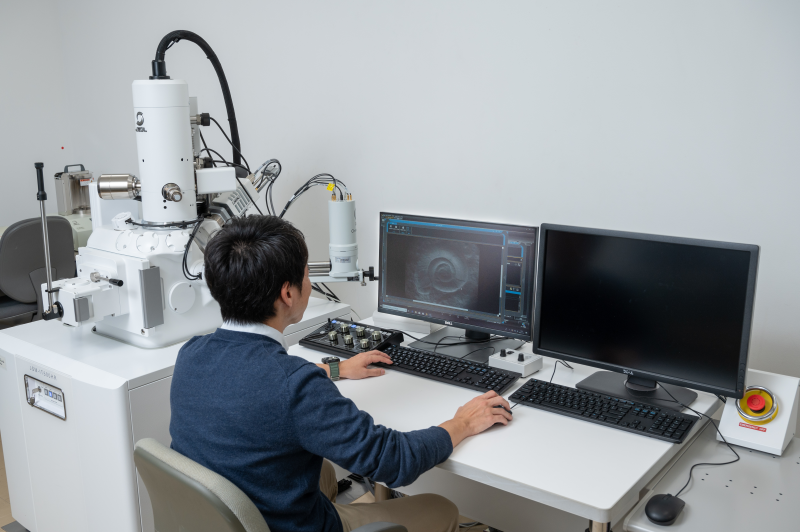
Dr. Kentaro Nakayama making observations using a scanning electron microscope JSM-IT500HR/LA
The research paper was published in July 2022. At that time, the only known fossil of a freshwater bivalves with recognizable patterns were about 15 million years old, which was the oldest. The research by Dr. Asato and his colleagues has now moved the age back more than 100 million years. This research outcome is displayed at the "Dinosaurs in Fukui Prefecture" section in the permanent exhibition. "If you visit this museum, we wish very much that you have a chance to observe the beautiful color patterns" (Dr. Asato).
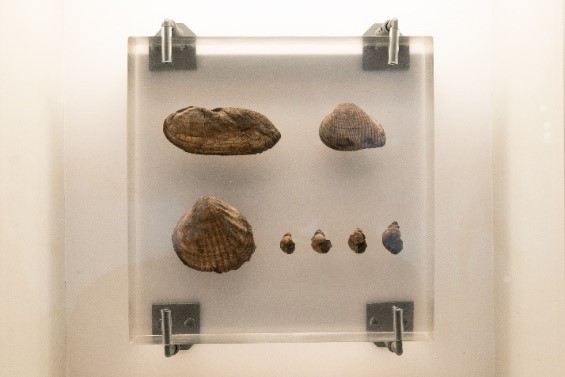
Freshwater fossil shellfish
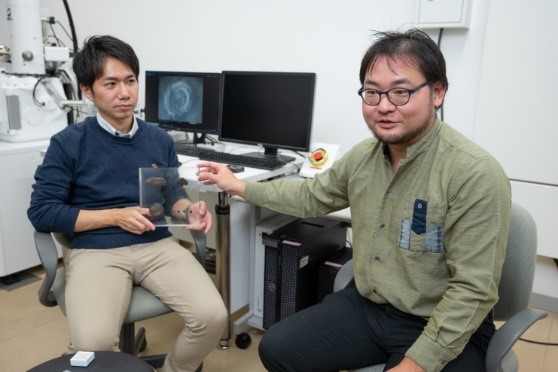
Dr. Kaito Asato explaining about fossil freshwater shellfish
SEM (Scanning Electron Microscope) with everything improved: functions and ease of use
The focal depth of an SEM is said to be about 100 times greater than that of an optical microscope. Use of an SEM allows for observations at high magnification which is difficult with the optical microscopes. In addition, it is possible to provide data with minimal blurring in front and behind the image plane for relatively large fossils such as eggshells and shellfish.
Moreover, observations of a cross-section of fossil eggshells enable their classifications based on their crystalline structures. Similarly, small pieces of fossil shellfish can also be identified upon observation of color patterns. Observation by SEM is an important analytical approach.
When a fossil sample is found, observation using SEM begins. What kind of SEM is used for studying fossils?
"First of all, the fossils are so valuable that we do not want to coat them with metal deposition, and so a low vacuum is a must. We look at small places on the large fossils. A large sample must go in, and then we look at the whole thing. Then, we specify the area we want to look at and zoom in on it. We repeat this process, so the operation must be smooth. We also want to do compositional analyses, so we need an EDS (energy dispersive X-ray spectrometer)." (Dr. Imai)
At Fukui Prefectural Dinosaur Museum, JEOL's SEM which was in place around in 2000 when the museum opened, has been utilized for almost 20 years. And in 2019 it was replaced with the successor model of JSM-IT500HR/LA. When we asked about the ease of use, "it is much better in everything than the previous model. Movement of field of view and zooming can be quickly done with a mouse only. Above all, it is great that we can take photos of the specimens inside the chamber in color prior to SEM imaging. Fossils are mostly monotone. Still, when imaging them using an electron microscope, in black and white, the area of interest is easily missed. But now as it is in color, the problem has been resolved". (Dr. Imai).
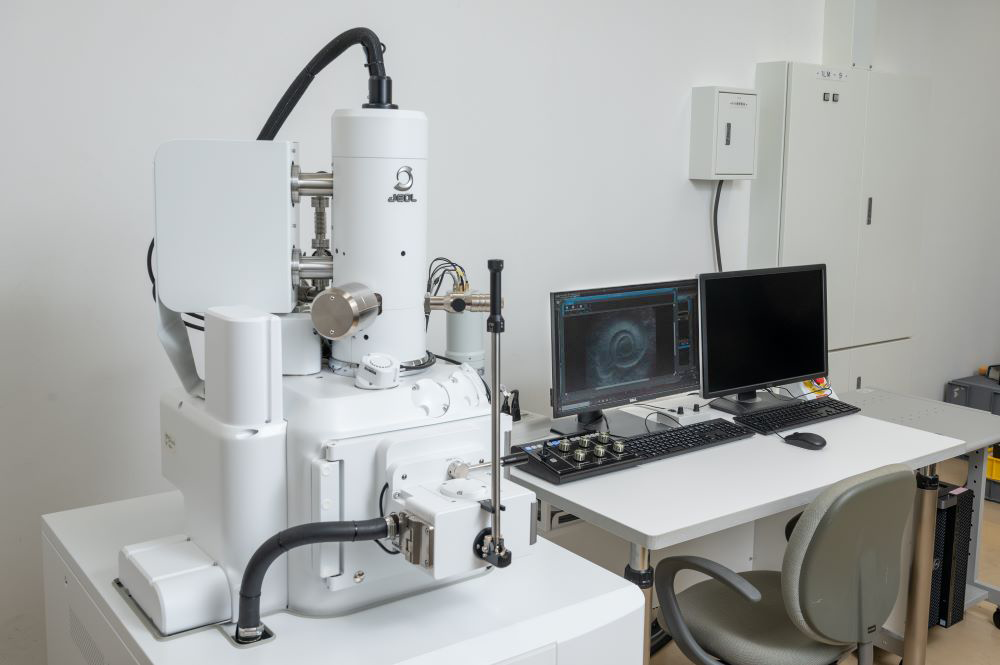
Use of JSM-IT500HR/LA is not limited to the researchers of the museum. It employs the cathodoluminescence (CL) detection system allowing for analysis of luminescence arisen when electron beams are irradiated on the specimen, and it can be utilized to obtain important information in geology such as rocks and minerals. Therefore, sometimes Toyama University "asks to use it." In addition, some of the researchers at the museum also serve as the professors of Fukui Prefectural University. So, it is possible that the instrument will be used for the research at that university. In 2025, "Department of Dinosaur Sciences" is planned to be established in that university. Then, there may be a request to use the instrument by that department. JSM-IT500HR/LA is expected to play a role in satisfying a wide field of demands from the research bases in the Hokuriku region.
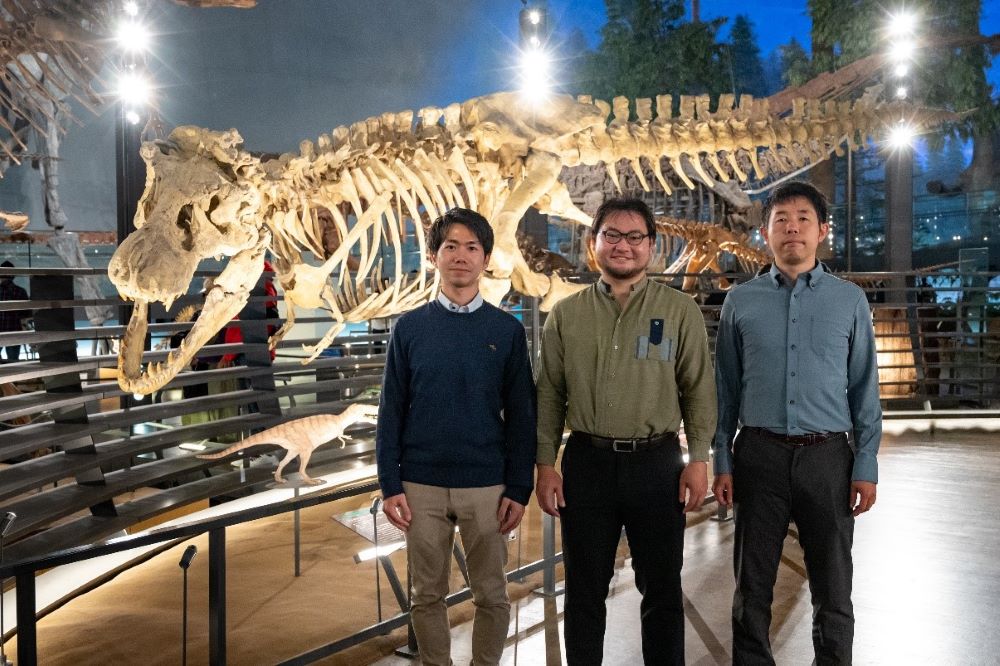
Profile (From left to right in the photo)
Dr. Kentaro Nakayama
Completed the Ph.D. program at Graduate School of Integrated Arts and Sciences, Kochi University
Ph.D. (Science)[Kochi University]
April 2018: Fukui Prefectural Dinosaur Museum
Dr. Kaito Asato
Completed the Ph.D. program at Graduate School of Life and Environmental Sciences, University of Tsukuba
Ph.D. (Science)[University of Tsukuba]
April 2020: Fukui Prefectural Dinosaur Museum
Dr. Takuya Imai
Completed the Ph.D. program at Graduate School of Natural Science and Technology, Kanazawa University.
Ph.D. (Science) [Kanazawa University].
April 2015: Fukui Prefectural Dinosaur Museum (Concurrent Position)
April 2019: Institute of Dinosaur Research, Fukui Prefectural University
April 2020: Dinotech Lab, Research Institute for Earth Science Visualization Technology Co., Ltd. (Concurrent Position)
December 2021: Dinosaur Institute, Ltd. (Concurrent Position)
